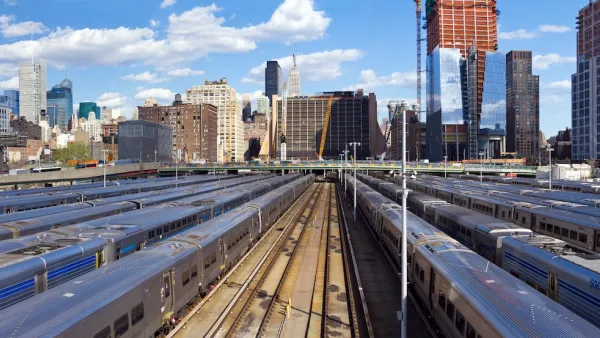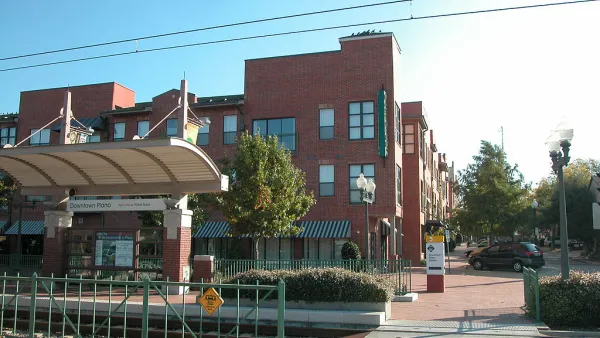Funding from a nonprofit initiative provides concrete measures to prevent displacement due to the construction of the Green Line in the Twin Cities.
Major infrastructure projects such as railway constructions often result in displacement of adjacent homes as well as negative impacts to surrounding businesses. As Jessica Leber reports, in building the Green Line light rail line to connect Minneapolis and St. Paul, everyone from the "government, nonprofits, businesses, and the local community" convened from the planning stage to avoid such outcomes.
Aptly named the Corridor of Opportunities project, the Twin Cities' collaborative effort was possible due to support from the nonprofit organization Living Cities and its Integration Initiative. Leber describes the goals of the initiative: "For the last three years, the initiative has provided a total of $85 million in grants, low-interest loans, and market-rate loans…To get everyone who has a stake in the city’s future working together to tackle a specific problem."
The Integration Initiative grants in conjunction with funding from the U.S. Department of Housing and Urban Development allowed the Corridor of Opportunities team to approach the transit-oriented project with the interest of the communities in mind: "[The team] created city staff jobs devoted to transit-oriented development and passed laws that changed the system, such as assigning greater weight to affordable housing projects located near transit" as well as "financing seven mixed-income and affordable housing development [sic]…about two dozen smaller projects and market research studies that would not only bolster the communities disrupted by construction and [sic] but also protect them from inevitably rising land values in the future." Other efforts included "fund[ing] facade and infrastructure improvements to help businesses improve their own look."
Leber notes the project's successful outcome: "Of 350 businesses that received assistance during the period of heavy construction, only four folded." Nine other cities are currently working with the Livable Cities' Integration Initiative.
FULL STORY: Linking Minneapolis And St. Paul With A Transit Project That Doesn't Destroy Communities

Analysis: Cybertruck Fatality Rate Far Exceeds That of Ford Pinto
The Tesla Cybertruck was recalled seven times last year.

National Parks Layoffs Will Cause Communities to Lose Billions
Thousands of essential park workers were laid off this week, just before the busy spring break season.

Retro-silient?: America’s First “Eco-burb,” The Woodlands Turns 50
A master-planned community north of Houston offers lessons on green infrastructure and resilient design, but falls short of its founder’s lofty affordability and walkability goals.

Test News Post 1
This is a summary

Analysis: Cybertruck Fatality Rate Far Exceeds That of Ford Pinto
The Tesla Cybertruck was recalled seven times last year.

Test News Headline 46
Test for the image on the front page.
Urban Design for Planners 1: Software Tools
This six-course series explores essential urban design concepts using open source software and equips planners with the tools they need to participate fully in the urban design process.
Planning for Universal Design
Learn the tools for implementing Universal Design in planning regulations.
EMC Planning Group, Inc.
Planetizen
Planetizen
Mpact (formerly Rail~Volution)
Great Falls Development Authority, Inc.
HUDs Office of Policy Development and Research
NYU Wagner Graduate School of Public Service




























